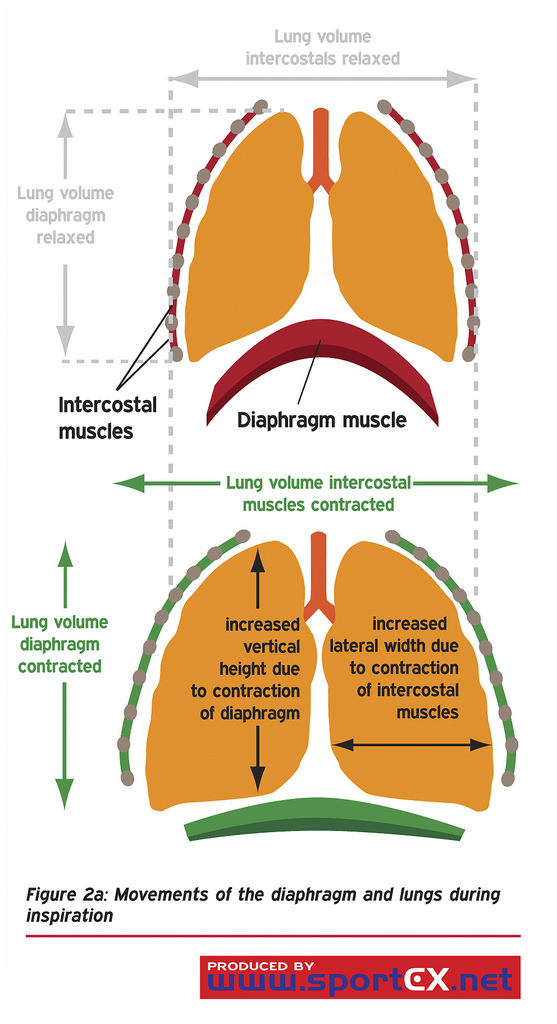Memorizing Your Song
Wednesday, October 18, 2017 by Jeffrey Tarr | Uncategorized
THE LEARNING STYLE METHOD

Attributed to wikihow.com/Memorize-Lyrics-of-a-Song
Incorporate your learning style into your approach. Now that you understand your brain a little better, it’s time to consider the best way to go about memorizing those song lyrics. Remember, you don’t have to confine yourself solely to the techniques recommended for your primary learning style; most people will learn fastest if they incorporate elements of all three.
- Auditory learners are at an advantage when it comes to learning song lyrics, as songs are by nature auditory. If you are an auditory learner, listening to a song on repeat is likely to be your best bet. Singing or speaking the lyrics aloud to yourself will also help. At first, you will need to read the lyrics as you sing or speak them, but with repetition, this will become unnecessary.
- Tactile learners will also benefit somewhat from singing along with the song they are trying to learn, although, in this case, it has more to do with their propensity to learn by doing than any particular benefit of auditory processing. If you are a tactile learner, you will also find writing the lyrics out by hand a few times very helpful.
- Visual learners will want to spend some time studying a written copy of the lyrics. If you are a visual learner, watching a music video of the song you are trying to memorize can be a good tool, as it will help you associate visual imagery with specific lyrics. You may find it helpful to highlight different verses of the lyrics with different colors, as well; when you are trying to recall a specific verse later, you can call to mind the color in which it was highlighted, which may help you visualize the words on that part of the page.
THE “RULE OF 25’s” METHOD

Adapted from Lucia Lucas’ blog: 0p3r4.com
David Holloway told all of the Santa Fe apprentices how to learn and memorize a role the first day the summer internship program. While muscle memory is achieved with 3,000-5,000 repetitions, meaningful learning begins at 75 repetitions.
Say the text 25 times. Slowly talk through the text, noting your difficulties with pronunciation. Pay attention to words not common to your normal singing vocabulary. The more repetitions you do, the more your brain and muscles will come up with the next sequence of words automatically. This is a good time to note consonants to sing through, elisions, and accents of each word. 25 times is quite a few if you are diligently reading aloud. Use tick marks on your song or translation page to note how many reps you have done, because, in the moment, your brain will need to concentrate purely on the text.
Speak the text 25 times in rhythm. After simply speaking the words at your own pace 25 times, you should be at ease with the text. You will now speak the text in rhythm. If you are doing a new piece which is very rhythmically difficult, you can first clap the rhythm without the words, but don’t count it towards your 25 times. Once 25 repetitions of text in rhythm is completed, the melody should be very simple to place on top of all your work.
Sing it with music 25 times. You should begin singing it “on-book”, but you will find after about 10 times you probably will have no impulse to look at the score anymore. For most roles after 25 times with music and all the other prep, you should be ready for staging. Doing this work always makes me extremely confident at the beginning of a six week rehearsal period.
Multiple Methods by Bruce Schoonmaker

1. Brute repetition. Speak the text repeatedly. Sing the text repeatedly.
2. The rule of three: Work a long phrase until you can repeat it perfectly from memory three times consecutively. Do the next phrase the same way. Combine the phrases and work them as one long phrase. Build by phrases until you sing perfectly from memory an entire section of the aria/song three times consecutively. Build by sections until you have memorized the whole song.
3. Memorize the text without the music. In other words, memorize it as a poem, rather than as a song. Then put it with the music.
4. Speak the rhythm. Sing the rhythm, on one pitch.
5. Try memorizing while lying on your back. Studies have shown that actors memorize roles faster while working on memorizing in a supine position.
6. Memorize the song
7. Reward: Reward yourself with each song memorized. Get a frozen yogurt or goody that you really like. Don't get it until you've sung the piece successfully in the presence of others (in other words, performed it from memory under pressure).
8. Write the words on paper while repeating the song from memory.
9. If you visualize the words in order to memorize, visualize the words in the upper left quadrant of your vision. I read this in a book on Neuro-Linguistic Programming. Oddly enough, it seems to settle in the memory quicker and more deeply by using the upper left quadrant.
10. Try to "hear the piece in your head," and to "listen" to it, preferably right before you go to sleep -- or to "hear" it while you are listening to something else.
11. Delay Gratification: When working on an entire role (opera, musical, or song cycle), memorize your favorite piece last. Memorize the most difficult music first. Memorize ensembles before solos. In other words, delay the gratification of memorizing your favorite parts until the other sections are memorized.
12. Try working on memorization while doing some mindless chore. Repeat phrases over and over again while cleaning up or washing dishes or sweeping. Refer to the score when necessary, then return to the mindless task and work the memory.
13. Get a friend to "repetiteur" for you, playing the piano accompaniment over and over again while you sing, in order to memorize. Don't try to make the song technically perfect while doing this kind of drill; you may even "mark" the voice. Just repeat the music many, many times in order to drill it into your mind.
MY PERSONAL METHOD

I love to learn music, but memorizing music is probably my least favorite part of being a professional singer...well, memorization and schmoozing. I find it best to use several types of learning styles at once because I don’t think that I am singular in my learning style. I will say that once I have the music memorized, initially, I see the music - lyrics and vocal line - in my head; however, once I have fully memorized the music, it becomes intuitive, that is to say, the correct lyrics and the vocal line must be this way. It would be like looking at the sky on a clear day and calling its color “orange”. It just doesn’t feel correct.
LEARNING (I love this part!!!)
Step 1: I generally select a recording of a singer whose voice I find pleasing and who has superior diction (usually a native speaker), perfect execution of rhythms and pitches of the song, and phrasing that I would incorporate into my own singing.
Step 2: While listening to the song, I prepare my score/song. If the song is not in my native language, I write a word-for-word translation above the vocal line and write the IPA transcription under the lyrics. If there is an English version of the song already written in, I usually use white-out to erase this useless text and to minimize any distractions for my eyes. Then I mark all my beats with vertical lines from the vocal score to the accompaniment score while marking numbers and “+” (“and’s”) over the section where there is no vocal line.
Step 3: I learn the song until I can sing it perfectly from a musical perspective with my music. It’s during the time that I begin to think about the emotions that the text provokes in me and how I want to portray these emotions to the audience. I also listen to a diction track and attempt to say the word with a perfect lyric accent.
MEMORIZATION (frenemy at best)
Step 4: I split the lyrics up into sections that would be similar to paragraphs. If it has verses, this makes this task easy. I focus on each word of each line of each section while also noting its translation and transcription. I read the first word out loud, then the first two words, then the first three words, and so on until I have completely read out loud the entire section.
Step 5: I write out that section on a notebook paper on every three lines while only referencing the lyrics when I cannot remember the word. I then write my word-for-word translation (again, only referencing my marked up sheet music when necessary).
Step 6: By now the lyrics, diction, and word meaning are pretty secure in my memory, I can focus on the rhythm of each word. I recite the words with a supported tone in rhythm. I reference my music for rhythms alone. I sometimes use a relative up and down pitch, but the melody, at this point, is not the focus. Besides, I find that I have usually learned the melody pretty well during Step 2.
Step 7: I add the melody line. If the melody is problematic, I will try to isolate it by singing it half-voiced on a neutral vowel. I may sing along with my favorite recording from Step 1.
Step 8: I run the song with accompaniment using an “optional peek-a-boo” ( ™Steven Gathman - Chorus Master of the Washington National Opera) when necessary.
Fundamentals of Singing - Breath Support
Sunday, September 17, 2017 by Jeffrey Tarr | Breath Support
If there is one area of contention amongst vocal pedagogues, I would say it is the area of breath support. In fact, we cannot even agree on a common name. Some instructors refer to this act as breath control; others refer to it is breath management. I choose the phrase "breath support" because it best describes the sensation that I feel as a singer. I want you to imagine a jewel; it sets a pretty column. That jewel is priceless - it is one of kind. The column is common but practical. This jewel represents your voice - it IS priceless and one of kind; the column represent the breath that we have created and continue to create each time we inhale.

Breath Support -works by engaging the lower abdominal muscles, creating higher pressure in the abdomen and thorax, allowing the diaphragm's relaxation (and upward rise) to be more carefully controlled. The rib cage remains as expanded as possible while singing.
To find those lower abdominal used in breath support simply make an open fist with one hand. Press the other hand into the lower torso underneath the belly button. Now blow into the open fisted hand as if you were blowing a horn and feel the tension in the lower torso as the lower abs are contracted, or as I like to say, activated.
It is important to note that the order of good singing is always: 1. Inhalation, 2. Activation, and 3. Phonation.
I find that hissing is an easy way to find this support. Again, press a hand into the lower abdominal region which is just under the belly button and hiss.
Hissing
- Inhale to the count of 4, breathe out, hissing, to the count of 4
- Then, breathe in for 6, and hiss out for 10
- in for 6, out for 12
- in for 2, out for 12
- in for 4, out for 16
- in for 2, out for 16
- in for 4, out for 20
- in for 1, out for 20 (remember we just need to upon the rib cage to allow the air to rush in, we do NOT need to gulp air.)
Fundamentals of Singing - Inhalation
Sunday, September 10, 2017 by Jeffrey Tarr | Inhalation
Inhalation - The act of taking in a breath.
It is important to present the two modes of breathing separately because it is impossible to support your singing without a good inhalation. Inhalation results from the negative pressure in the lungs caused by contraction of the diaphragm, which causes it to move downwards and to expand the chest cavity. The resulting flow of air into the lungs restores a pressure equal to that of the atmosphere. It is important to note that the breath originates with the diaphragm, NOT the mouth or nose.

Inhalation must be: silent, deep, and wide. Silent breathing is fundamental to good singing. Noisy inhalation causes tension and dryness in the throat as well as it just sounds bad. Deep breathing starts with the diaphragm, the muscle located under your lungs. The diaphragm moves downward and pushes the viscera (contents of the belly) down to make way for the lungs to expand. Wide breathing is initiated by the intercostal muscles in the rib cage. These muscles move outward from the lungs to make room for the lungs to expand horizontally. Avoid raising shoulders as you inhale.


